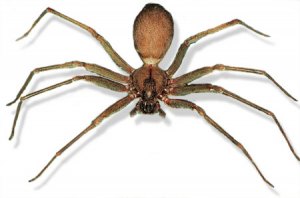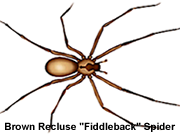

Brown Recluse Spider
location, identification, behavior, poison, bites treatment and first aid


location, identification, behavior, poison, bites treatment and first aid
A doctor will run a number of exams and tests to give a patient the right diagnosis. This is why it is a good thing if you can bring the spider that has bitten the victim with you and present it to the doctor. This will help the attending physician to give the right diagnosis and treatment. Most people who are bitten with a brown recluse spider don't even have an idea that they were bitten until the symptoms arise.
Your doctor will inquire about the how you get the bite and other things that happened during that particular event. You will also be asked the time that has elapsed since you got the bite along with your current medical condition, allergies and medications that you are taking.
Your doctor can also let you go through a number of exam and tests that may include complete blood count, urinalysis, blood clotting studies, kidney function studies and electrolytes.
It is important to take note that there are no lab findings that can confirm to an absolute certainty that a victim has indeed been bitten by a brown recluse spider. A diagnosis can only be concluded after a careful examination and a good review of the history of the bite and the location where the bite is. One can correctly and immediately diagnose a bite if the brown recluse spider is brought along.
After diagnosis, a regular follow up on the condition of the wound should be done within the first 96 hours to assess the possibility of necrosis. If the bite progresses into a systemic disease, hospitalization is recommended. The continued intake of antibiotics will also be prescribed until the secondary infections on the bite are all clear. If necrosis of the wound is found, a surgery may be needed.